Trump factor weighs on the region’s economies
2 January 2025

If 2024 was a slow road back to stabilisation for economies in the Middle East and North Africa (Mena) region, with lower interest rates and generally improved fiscal positions providing some ballast against tumultuous geopolitical risk events, the coming year portends yet more instability with the return to the White House of Donald Trump. This will, for good or ill, have a decisive impact on the region’s economic trajectory.
 The region is looking at a more rapid economic growth rate in 2025 than the previous year. The World Bank, which estimated real GDP growth in the Mena region of 2.2% in 2024, sees region-wide growth at 3.8% in 2025, with Gulf economies driving this improvement.
The region is looking at a more rapid economic growth rate in 2025 than the previous year. The World Bank, which estimated real GDP growth in the Mena region of 2.2% in 2024, sees region-wide growth at 3.8% in 2025, with Gulf economies driving this improvement.
This reflects the gradual phasing out of voluntary oil production cuts starting from December 2024.
Mena oil importers will see real GDP growth expand from just 1.3% in 2024 to 3.4% in 2025, says the World Bank.
Interest rates are a key ingredient in the mix, linking to the second Trump presidency, with its likely ramp-up of global trade-war pressures.
If the president-elect follows through on his tariff plans, which range from a proposed 60% on Chinese imports to 20% on the rest of the world, it will trigger higher inflation, thereby slowing the Federal Reserve’s moves to cut interest rates.
So while Mena exports to the US are unlikely to suffer direct fallout from planned tariffs – according to consultancy Capital Economics, the share of Mena goods exports going to the US stood at just 3.5% this decade – it is the secondary effects that could knock regional economies off their stride.
“If we do get the tariffs, and that leads to higher inflation in the US, that also means there will be tighter monetary policy in the Gulf countries with dollar pegs than would otherwise be the case,” says James Swanston, Mena economist at Capital Economics.
The possibility of a stronger dollar in 2025 means that for those economies with dollar pegs, their domestic industries could become less competitive. This jars with the thinking behind regional economic diversification schemes such as Saudi Arabia’s Vision 2030, which are predicated on developing manufacturing sectors that are mainly export-oriented.
 Regional fortitude
Regional fortitude
The largest Gulf economies should at least be well positioned to withstand such headwinds, even if a trade war hits the global economy. According to the World Bank, a lower interest rate environment, together with further investment and structural reform initiatives, will yield non-oil growth of more than 4% in the region’s two largest economies, Saudi Arabia and the UAE. This – plus higher oil production – should be enough to offset any loss of momentum from lower oil prices and weaker fiscal balances.
Saudi Arabia is expected to show steady growth in 2025, with its Q3 2024 average GDP growth of 2.8% underscoring the kingdom’s stronger performance. However, the robust spending of past years is giving way to a more conservative fiscal approach, and that will inevitably impact project activity.
Riyadh’s 2025 pre-budget statement revealed a tougher fiscal stance for 2025, with anticipation of a deficit of 2.9%. With revenues expected to be 3.5% weaker in year-on year terms in 2025, this will mean reduced spending – around 3% lower than that outlined in the 2024 budget.
“Saudi Arabia is being a bit more prudent about how they spend their money,” says Swanston.
While there will be continued support for current spending, and for the official gigaprojects, capital expenditure will shoulder the burden of cuts. This will likely feed through to weaker non-oil GDP growth.
The UAE should see comparatively stronger growth momentum in 2025, driven by a combination of healthier dynamics in its touchstone real estate and tourism sectors, and the impact of infrastructure investment programmes.
NBK Economic Research sees the UAE non-oil economy enjoying another year of 4%-plus growth in 2025, possibly as high as 5.1%. However, the bank’s economists offer a note of caution, as this is still below the 7.2% annual average growth rate the government requires to achieve the Vision 2031 target of a doubling in GDP by 2031.
On the fiscal front, the UAE is looking at a better situation in 2025. “The UAE has diversified its revenues to the point where non-oil revenues are larger than oil revenues. So, even if oil prices turn negative, they still wouldn’t run a deficit,” says Swanston.
Qatar is maintaining a tight fiscal policy, but from late 2025 it will begin to feel the effects of a significant predicted revenue boost when the first phase of its liquefied natural gas (LNG) expansion comes on stream. This will eventually add 40% to the country’s existing LNG export capacity of 77 million tonnes a year.
Kuwait, meanwhile, is set to run continued budget deficits, although the country’s non-oil economy has emerged from two years of negative growth and is forecast by NBK Research to expand by 2.6% in 2025. But Kuwait faces structural challenges, including a low investment rate and the need for fiscal consolidation, which will absorb policymakers in 2025.
Oman, in contrast, looks to be in a better position than in previous years. According to an Article IV assessment released by the Washington-headquartered IMF in November, reform implementation under Oman Vision 2040 is proceeding decisively, along with initiatives to improve the business environment, attract large-scale investments and empower small and medium-sized enterprises.
The sultanate’s economy continues to expand. Growth, says the IMF, is set to rebound starting in 2025, supported by higher hydrocarbons production and the continued acceleration of non-hydrocarbons growth.
Bahrain faces a challenge when it comes to containing the country’s rising debt-to-GDP ratio, which grew from 100% in 2020 to just under 130% in 2024. The country needs to press ahead with fiscal consolidation moves if it is to improve the debt position.

Wider region
Outside the GCC, the picture will vary in 2025. Egypt has realistic expectations of a better year ahead, with falls in inflation and interest rates providing relief after a tough 2024. But foreign investors may feel a note of alarm at recent indications from President Abdul Fattah El-Sisi that the challenges associated with the country’s reform programme – a hint at the tough impact of reform on Egyptian consumers – might lead it to review its existing IMF deal.
Tunisia presents a similar challenge. President Kais Saied’s proposed bill stripping the central bank of its ability to set interest rates and influence exchange rate policy without government consent is unlikely to encourage investors.
In Egypt at least, there are silver linings that should assure investor confidence, even if the government’s commitment to reform wavers. “When it comes to the debt issue, everything’s in a pretty good place in Egypt,” says Swanston.
“Yes, interest service payments on the debt have risen over the past 12 months, and the feed-through means that they will still be paying quite high debt servicing costs over the next six months. But yields are coming down in terms of its dollar-denominated debt. Worries about default are not as strong as before.”
President El-Sisi may also find support from other sources. Given his previous close ties with the Trump administration in 2016-20, there may be a greater willingness in Washington to disburse funds to such an integral partner of US foreign policy, particularly when it has been buffeted by the Gaza conflict and the impact of Houthi attacks in the Red Sea.
Iraq’s economic fortunes remain bound up with the price of oil, which accounts for 90% of state revenues. The IMF has forecast a 4.1% GDP growth rate for Iraq in 2025, reflecting in part its surprising resilience to regional conflicts. However, lower oil prices may yet erode the country’s economic momentum.
Progress on major projects such as the Development Road would at least suggest prime minister Mohammed Shia Al-Sudani’s government is focused on long-term delivery and tackling Iraq’s overreliance on hydrocarbons exports.
Meanwhile, Iraq’s larger neighbour Iran, which saw GDP growth increase to 5% in the 2023-24 Iranian year, faces still bigger challenges linked to Trump’s return. It can expect to face a much tighter sanctions regime on its oil sector in 2025, with efforts to curb its ability to sell its crude oil on international markets expected to gain traction. The effects of these moves are still in the balance.
The positive news for Tehran is that several of its crude buyers appear to be undaunted by a reimposition of deeper curbs on exports. For example, Chinese refiners have been importing Iranian oil to the tune of 1.5 million barrels a day. The country’s seeming imperviousness to international financial pressures could undercut the impact of a beefed-up US sanctions regime, although few would relish being in the shoes of Iranian economic policymakers right now.
Exclusive from Meed
-
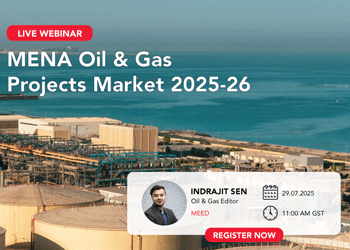 WEBINAR: Mena Oil & Gas Projects Market 2025-26
WEBINAR: Mena Oil & Gas Projects Market 2025-2610 July 2025
-
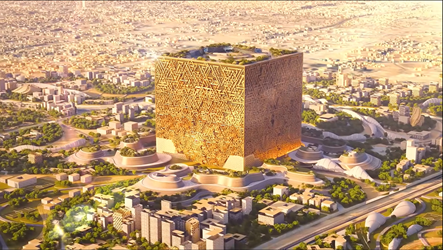
-
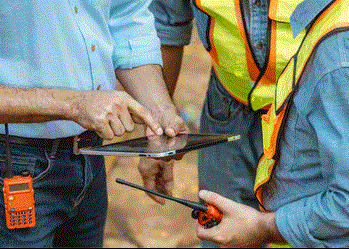 Chinese firm wins Mid Island Parkway tunnelling deal
Chinese firm wins Mid Island Parkway tunnelling deal10 July 2025
-
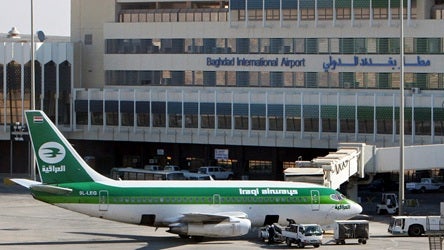 Iraq tenders Baghdad airport PPP project
Iraq tenders Baghdad airport PPP project9 July 2025
-
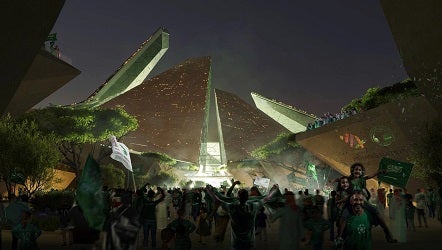
All of this is only 1% of what MEED.com has to offer
Subscribe now and unlock all the 153,671 articles on MEED.com
- All the latest news, data, and market intelligence across MENA at your fingerprints
- First-hand updates and inside information on projects, clients and competitors that matter to you
- 20 years' archive of information, data, and news for you to access at your convenience
- Strategize to succeed and minimise risks with timely analysis of current and future market trends

Related Articles
-
 WEBINAR: Mena Oil & Gas Projects Market 2025-26
WEBINAR: Mena Oil & Gas Projects Market 2025-2610 July 2025
Date & Time: Tuesday 29 July 2025 | 11:00 AM GST
Agenda:
1. Summary of the Mena oil, gas and petrochemicals projects market
2. Summary description of the main megaprojects, including project programmes
3. Analysis of active contracts and spending to date
4. Analysis of top contracts by work already awarded
5. Long-term capital expenditure outlays and forecasts
6. Highlights of key contracts to be tendered and awarded over the next 18 months
7. Top contractors and clients
8. Breakdown of spending by segment, ie, oil, gas, petrochemicals – upstream, downstream, onshore and offshore
9. Q&A session
https://image.digitalinsightresearch.in/uploads/NewsArticle/14241705/main.gif -
 New Murabba signs up South Korean firm for design works
New Murabba signs up South Korean firm for design works10 July 2025
Register for MEED’s 14-day trial access
Saudi Arabia’s New Murabba Development Company (NMDC) has signed a memorandum of understanding (MoU) with South Korea’s Heerim Architects & Planners to explore further design works on assets at the 14 square-kilometre New Murabba downtown project.
According to an official statement: “Heerim Architects & Planners will explore distinctive architectural plans that complement the development’s masterplan, with special focus on anchor assets, linear parks and smart city features.”
New Murabba CEO Michael Dyke signed the agreement last week during the company’s Investment and Partnership Forum in Seoul.
At the event, NMDC also signed an MoU with South Korea’s Naver Cloud Corporation to explore technological solutions for delivering the New Murabba downtown project.
According to an official statement: “The three-year agreement covers exploring innovative technology and automation to support the delivery of New Murabba, including robotics, autonomous vehicles, a smart city platform and digital solutions for monitoring construction progress.”
NMDC is in Seoul to examine technological offerings, assess financing options and showcase the investment opportunities available for the New Murabba downtown development.
The statement added that the excavation works for The Mukaab, the centrepiece of the overall development, have now been completed.
The Mukaab is a Najdi-inspired landmark that will be one of the largest buildings in the world. It will be 400 metres high, 400 metres wide and 400 metres long. Internally, it will have a tower on top of a spiral base and a structure featuring 2 million square metres (sq m) of floor space designated for hospitality. It will feature commercial spaces, cultural and tourist attractions, residential and hotel units, and recreational facilities.
Downtown destination
The New Murabba destination will have a total floor area of more than 25 million sq m and feature more than 104,000 residential units, 9,000 hotel rooms and over 980,000 sq m of retail space.
The scheme will include 1.4 million sq m of office space, 620,000 sq m of leisure facilities and 1.8 million sq m of space dedicated to community facilities.
The project will be developed around the concept of sustainability and will include green spaces and walking and cycling paths to promote active lifestyles and community activities.
The living, working and entertainment facilities will be developed within a 15-minute walking radius. The area will use an internal transport system and will be about a 20-minute drive from the airport.
The downtown area will feature a museum, a technology and design university, an immersive, multipurpose theatre, and more than 80 entertainment and cultural venues.
 READ THE JULY 2025 MEED BUSINESS REVIEW – click here to view PDF
READ THE JULY 2025 MEED BUSINESS REVIEW – click here to view PDFUAE and Turkiye expand business links; Renewed hope lies on the horizon for trouble-beset Levant region; Gulf real estate momentum continues even as concerns emerge
Distributed to senior decision-makers in the region and around the world, the July 2025 edition of MEED Business Review includes:
> AGENDA: UAE-Turkiye trade gains momentum> INTERVIEW 1: Building on UAE-Turkiye trade> INTERVIEW 2: Turkiye's Kalyon goes global> INTERVIEW 3: Strengthening UAE-Turkiye financial links> INTERVIEW 4: Turkish Airlines plans further growth> CURRENT AFFAIRS: Middle East tensions could reduce gas investments> GCC REAL ESTATE: Gulf real estate faces a more nuanced reality> PROJECTS MARKET: GCC projects market collapses> INTERVIEW 5: Hassan Allam eyes role in Saudi Arabia’s transformation> INTERVIEW 6: Aseer region seeks new investments for Saudi Arabia> LEADERSHIP: Nuclear power makes a global comeback> LEVANT MARKET FOCUS: Levant states wrestle regional pressures> GULF PROJECTS INDEX: Gulf projects index continues climb> CONTRACT AWARDS: Mena contract award activity remains subdued> ECONOMIC DATA: Data drives regional projects> OPINION: A farcical tragedy that no one can endTo see previous issues of MEED Business Review, please click herehttps://image.digitalinsightresearch.in/uploads/NewsArticle/14239016/main.jpg -
 Chinese firm wins Mid Island Parkway tunnelling deal
Chinese firm wins Mid Island Parkway tunnelling deal10 July 2025

Register for MEED’s 14-day trial access
Beijing-headquartered China Railway Tunnel Engineering Group has won a $60m subcontract for the tunnelling works on package 1B of the Mid Island Parkway project in Abu Dhabi.
Package 1B entails the construction of a cut-and-cover tunnel to cross the Khor Laffan Channel, which is the area between the Saadiyat and Um-Yifeenah islands.
The tunnel, which will be between 900 metres and 1 kilometre (km) long, is being constructed on a design-and-build basis and will tie in to packages 1A and 1C.
The project is being jointly constructed by a joint venture of local firm Yas Projects (Alpha Dhabi Holding) and Beijing-based China Railway International Group.
In June last year, MEED exclusively reported that Abu Dhabi's Department of Municipality & Transport had awarded contracts for three packages for phase one of the Mid Island Parkway Project (MIPP), as part of the Plan Capital urban evolution programme.
Phase one will start at the existing Saadiyat Interchange, which will connect the E12 road to the MIPP, and will end with the recently constructed Um-Yifeenah Highway.
It comprises a dual main road with a total length of 8km, including four traffic lanes in each direction, two interchanges, a tunnel and associated infrastructure works.
MIPP phase one is further divided into packages 1A, 1B and 1C, which were awarded separately.
The project ownership has been transferred from Aldar Properties to Abu Dhaibi's Department of Municipalities & Transport.
Previously, it was transferred from Abu Dhabi General Services Company (Musanada) to Aldar Properties, and the project was included in the Abu Dhabi Investment Office's public-private partnership project pipeline.
 READ THE JULY 2025 MEED BUSINESS REVIEW – click here to view PDF
READ THE JULY 2025 MEED BUSINESS REVIEW – click here to view PDFUAE and Turkiye expand business links; Renewed hope lies on the horizon for trouble-beset Levant region; Gulf real estate momentum continues even as concerns emerge
Distributed to senior decision-makers in the region and around the world, the July 2025 edition of MEED Business Review includes:
> AGENDA: UAE-Turkiye trade gains momentum> INTERVIEW 1: Building on UAE-Turkiye trade> INTERVIEW 2: Turkiye's Kalyon goes global> INTERVIEW 3: Strengthening UAE-Turkiye financial links> INTERVIEW 4: Turkish Airlines plans further growth> CURRENT AFFAIRS: Middle East tensions could reduce gas investments> GCC REAL ESTATE: Gulf real estate faces a more nuanced reality> PROJECTS MARKET: GCC projects market collapses> INTERVIEW 5: Hassan Allam eyes role in Saudi Arabia’s transformation> INTERVIEW 6: Aseer region seeks new investments for Saudi Arabia> LEADERSHIP: Nuclear power makes a global comeback> LEVANT MARKET FOCUS: Levant states wrestle regional pressures> GULF PROJECTS INDEX: Gulf projects index continues climb> CONTRACT AWARDS: Mena contract award activity remains subdued> ECONOMIC DATA: Data drives regional projects> OPINION: A farcical tragedy that no one can endTo see previous issues of MEED Business Review, please click herehttps://image.digitalinsightresearch.in/uploads/NewsArticle/14238039/main3047.gif -
 Iraq tenders Baghdad airport PPP project
Iraq tenders Baghdad airport PPP project9 July 2025
Register for MEED’s 14-day trial access
Iraq’s Ministry of Transport and the General Company for Airport & Air Navigation Services have released a tender inviting firms to bid for a contract to develop Baghdad International airport on a public-private partnership (PPP) basis.
The notice was issued in July, and the submission deadline is in September.
According to an official statement posted on its website, Iraq’s Ministry of Transport said that 10 out of 14 international consortiums that expressed interest in the project earlier this year have been prequalified to compete for the tender.
The scope of the estimated $400m-$600m project involves rehabilitating, expanding, financing, operating and maintaining the airport. It is the first airport PPP project to be launched in Iraq.
The initial capacity of the airport is expected to be around 9 million passengers, which will be gradually increased to 15 million passengers.
The International Finance Corporation (IFC), a member of the World Bank Group, is the project’s lead transaction adviser.
Iraq is already developing the Baghdad and Najaf-Karbala metro projects using a similar PPP model.
Earlier this month, MEED reported that Iraq intends to retender the contract to develop and operate the Baghdad Metro project, following the award of the estimated $2.5bn contract last year.
According to local media reports, Nasser Al-Assadi, adviser to Prime Minister Mohammed Sudani, stated that the previous developers had overestimated the project budget; therefore, the government will relaunch the entire process to implement the project.
https://image.digitalinsightresearch.in/uploads/NewsArticle/14229008/main.jpg -
 Contractors prepare revised bids for Roshn stadium
Contractors prepare revised bids for Roshn stadium9 July 2025

Register for MEED’s 14-day trial access
Saudi gigaproject developer Roshn has invited firms to submit revised commercial proposals by 24 July for a contract to build a new stadium adjacent to the National Guard facilities to the southwest of Riyadh.
Known as the National Guard Stadium, it will be delivered on an early contractor involvement (ECI) basis. It will cover an area of over 450,000 square metres and be able to accommodate 46,000 spectators.
The scope of work also covers the construction of auxiliary facilities, including training academy offices and two hotels, as well as retail and food and beverage outlets.
The firms had initially submitted bids on 8 April for the contract.
The stadium is scheduled to host 32 Fifa World Cup tournament games in 2034.
In August last year, MEED reported that Saudi Arabia plans to build 11 new stadiums as part of its bid to host the 2034 Fifa World Cup.
Eight stadiums will be located in Riyadh, four in Jeddah and one each in Al-Khobar, Abha and Neom.
The proposal outlines an additional 10 cities that will host training bases. These are Al-Baha, Jazan, Taif, Medina, Al-Ula, Umluj, Tabuk, Hail, Al-Ahsa and Buraidah.
The bid proposes 134 training sites across the kingdom, including 61 existing facilities and 73 new training venues.
The kingdom was officially selected to host the 2034 Fifa World Cup through an online convention of Fifa member associations at the Fifa congress on 11 December 2024.
 https://image.digitalinsightresearch.in/uploads/NewsArticle/14228507/main.jpg
https://image.digitalinsightresearch.in/uploads/NewsArticle/14228507/main.jpg

